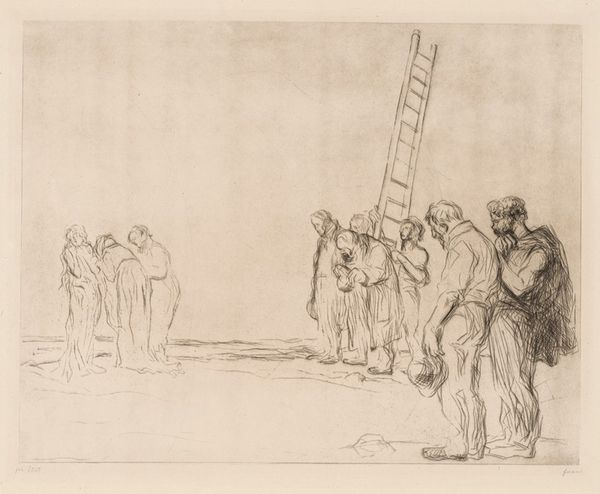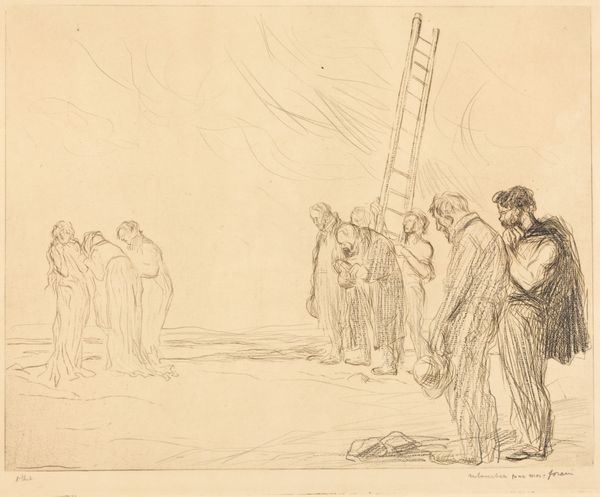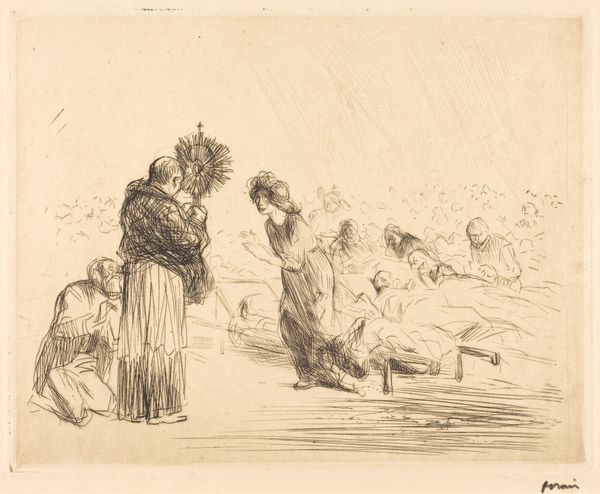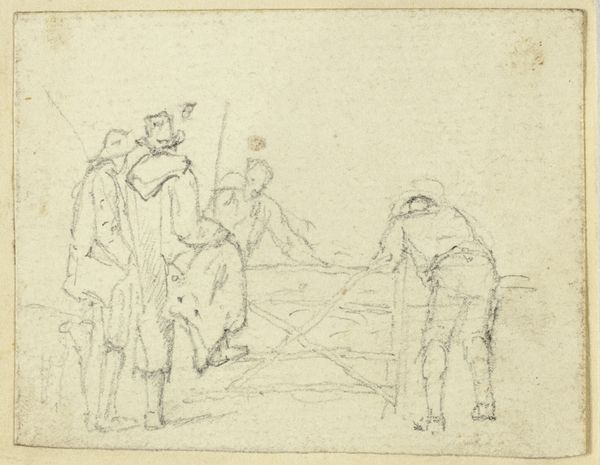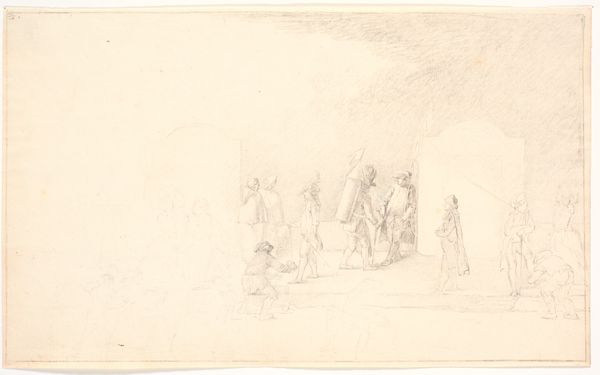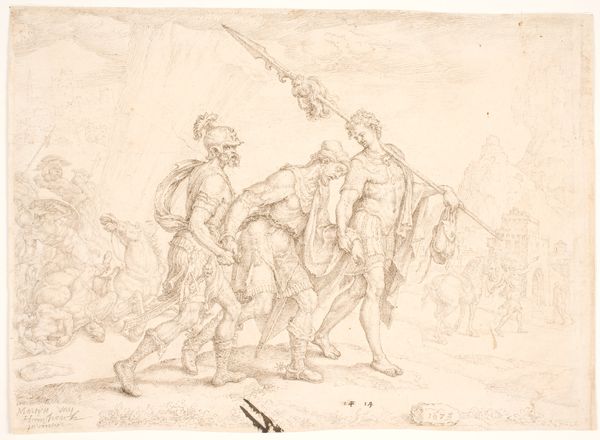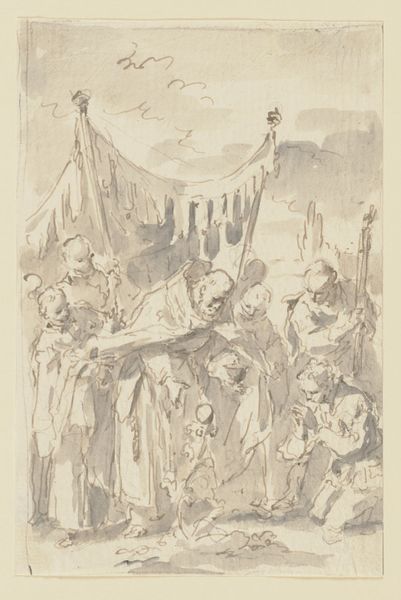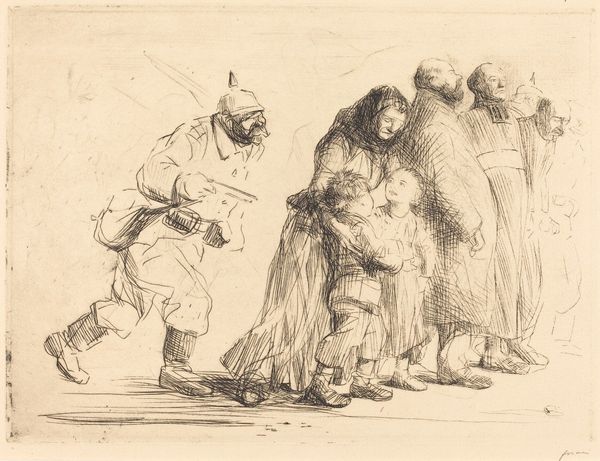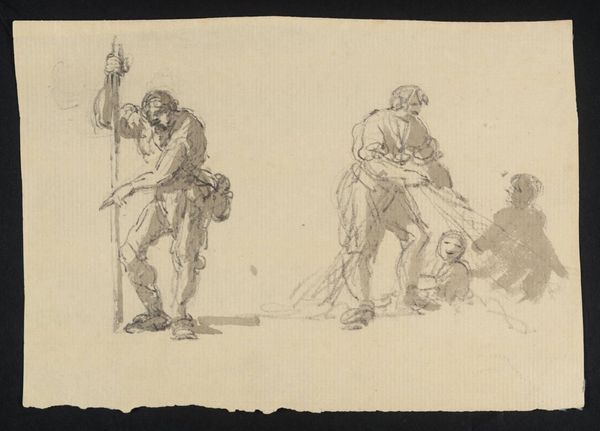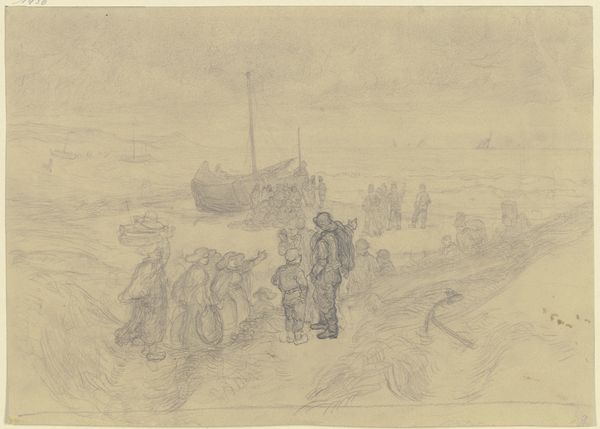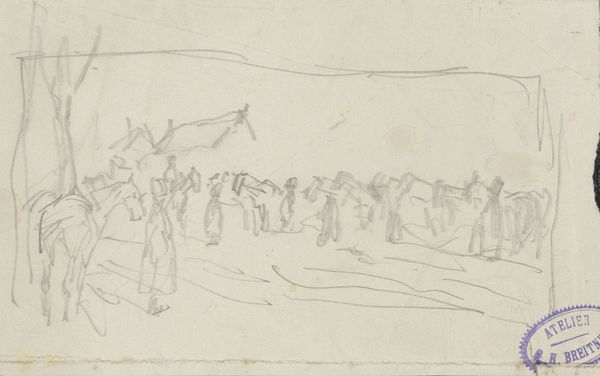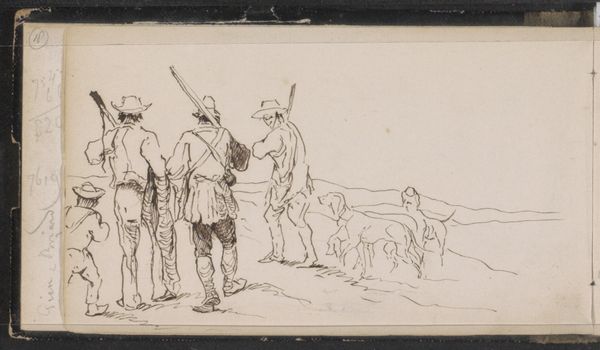
drawing, print, pencil
#
drawing
# print
#
pen sketch
#
landscape
#
figuration
#
pencil
#
history-painting
#
realism
Copyright: National Gallery of Art: CC0 1.0
Editor: Here we have Jean-Louis Forain's "Calvary (first plate)" from 1902. It looks to be pencil and possibly some kind of printmaking. There's an immediate sense of starkness to the scene, quite desolate, despite the gathering of figures. What stands out to you in this work? Curator: What immediately grabs me is the artist’s process – the marks made by the pencil or etching tool. Notice how Forain doesn’t conceal the labor. The sketchiness isn’t just a stylistic choice, but a revealing of the physical act of creation. The material means by which this image came into existence – that's what gives the piece its emotional power. Editor: So you see the apparent sketchiness as deliberate, emphasizing the making of the artwork rather than a deficiency in finish? Curator: Exactly! The roughness connects the viewer to the social reality, it shows us the gritty, unidealized portrayal. Consider the ladder, crudely rendered. It’s not an emblem of transcendence, but a tangible piece of equipment, crucial to the task at hand, like the tools of any other laborer. Editor: That's a very interesting point! It makes you consider the human labor, less about the biblical story and more about what's required from this work site and the reality around this moment, even for a biblical painting. Curator: Yes. What's being consumed in this moment? Is it about just observing this painting, or is it also a meditation of consumption in a deeper way and sense? By showing the literal labor behind this scene, Forain avoids sentimental piety and instead gives us something far more challenging. How might his process have been perceived at the time, given the tradition of highly polished history painting? Editor: It probably went against the grain for viewers used to grand historical scenes. Now I see a powerful connection to the here and now of its creation, not just the "there and then" of the depicted event. Thanks for this. Curator: And thank you for bringing the freshness of your insights.
Comments
No comments
Be the first to comment and join the conversation on the ultimate creative platform.
